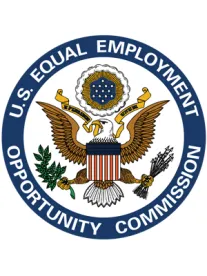In a matter of first impression for the U.S. Court of Appeals for the Seventh Circuit (which covers Wisconsin, Illinois, and Indiana), the Court considered whether the EEOC’s authority terminates upon its issuance of a “right to sue” letter or the dismissal of a subsequent lawsuit on the merits. The Court’s decision in EEOC v. Union Pac. R.R. Co., arose out of the EEOC’s efforts to enforce a subpoena in a matter in which a “right to sue” letter had been issued (after the passage of the 180 days the EEOC had to investigate the Charge) and a subsequent lawsuit had been filed, and ultimately dismissed on the merits.
As part of assessing whether the EEOC was authorized to enforce its subpoena seeking company-wide information, the Seventh Circuit considered conflicting findings of other circuit courts (e.g., a 1997 Fifth Circuit case holding the EEOC process had distinct stages, with the EEOC’s investigatory authority existing only in the pre-enforcement phase and terminating upon issuance of the right to sue; as compared to a 2009 Ninth Circuit case finding the opposite). The Court also placed weight on the statutory text of Title VII, more recent Supreme Court and Seventh Circuit case law relating to other aspects of the EEOC’s enforcement authority, and the EEOC’s adoption of a regulation (29 C.F.R. § 1601.28(a)(3)), providing:
Issuance of a notice of right to sue shall terminate further proceeding of any charge that is not a Commissioner charge unless the District Director; Field Director; Area Director; Local Director; Director of the Office of Field Programs or upon delegation, the Director of Field Management Programs; or the General Counsel, determines at that time or at a later time that it would effectuate the purpose of Title VII, the ADA, or GINA to further process the charge.
All things considered, the Seventh Circuit concluded that once a valid Charge had been filed with the EEOC, the authority became the EEOC’s – not the employee’s – to decide how the investigation would proceed, even after the issuance of a right-to-sue notice. The court likewise found that even dismissal on the merits of the lawsuit arising out of the right to sue did not put a halt to the EEOC’s authority to continue its investigation, as the EEOC was “the master of the charge in order to serve a public interest extending beyond that of a charging individual” and “[e]ven an adjudication on the merits of the individuals’ charges, as here, would leave the outcome to the narrower, private interests and resources of those individuals, rather than to the judgment that the EEOC is required to exercise in pursuing leads uncovered as part of its own, independent investigation in the public interest.”
While it may not be common for the EEOC to continue its investigatory efforts post-issuance of its right-to-sue notice, the Seventh Circuit’s recent guidance and siding with the Ninth Circuit on this issue provides food for thought to employers who are facing an aggressive EEOC investigation.




 />i
/>i

